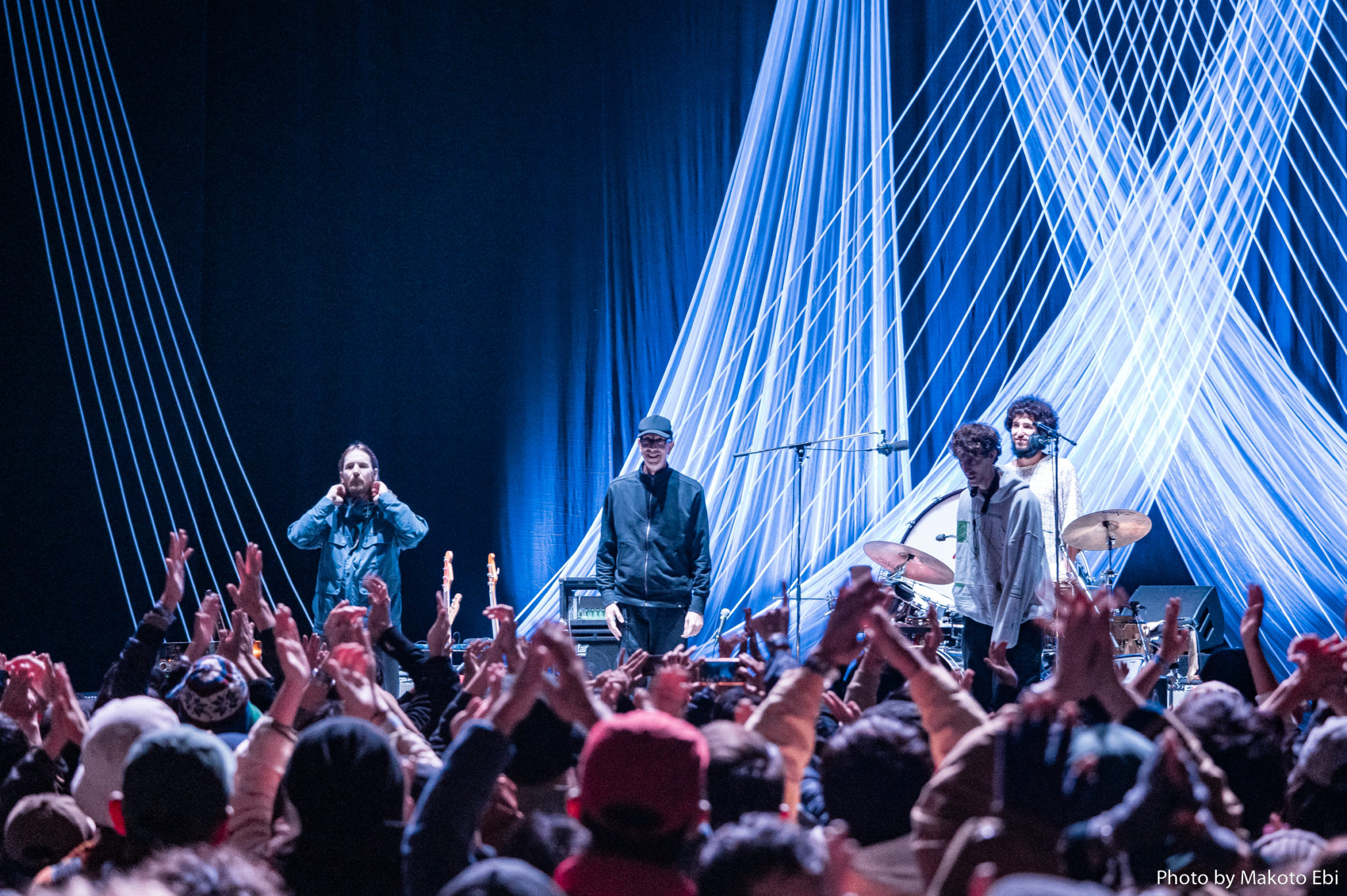Writer, born in 1987. Editor at an online magazine. Attends supposedly hip gigs and other music events to avoid getting stuck in the past, but is never overly enthusiastic about such outings.
This year’s Festival de Frue left a lasting impression on me, one that lingers even now that a month has passed since the event. Heading home after the two-day festival, I realized that what this event had always been trying to show us—or what the organizers themselves had wanted to bring about—had, in its fifth year, finally been accomplished.
The inaugural Festival de Frue, held back in 2017, featured a show by the Master Musicians of Joujouka. The acoustic concert, performed without a speaker system in a tent that recreated the local festival in the village of Jajouka, had an intensity that propelled it to the top of most attendees’ “Best concerts ever” lists.
Frue, who until then had been organizing an array of unique events at clubs and live houses in Tokyo, started Festival de Frue as a fully-fledged open-air festival. At the time, some thought that the Joujouka show at the first festival had seen Frue play their best hand right off the top, but that move now seems to me to have been the ideal choice, given Frue’s aims to expand the festival as a vehicle for their ambitions.
Festival de Frue is, in every facet, different from a regular music festival. Each artist appearing on either of the two stages is given at least an hour of performance time, but some shows go on for more than two hours. That approach to timetable management represents a polar opposite of most other festivals in Japan, where several stages are set up and performance times are kept short to allow for the booking of as many performers as possible. It also seems that the role of the headliner at Festival de Frue is not so much to attract crowds, but first and foremost to embody the ongoing modus of the festival.
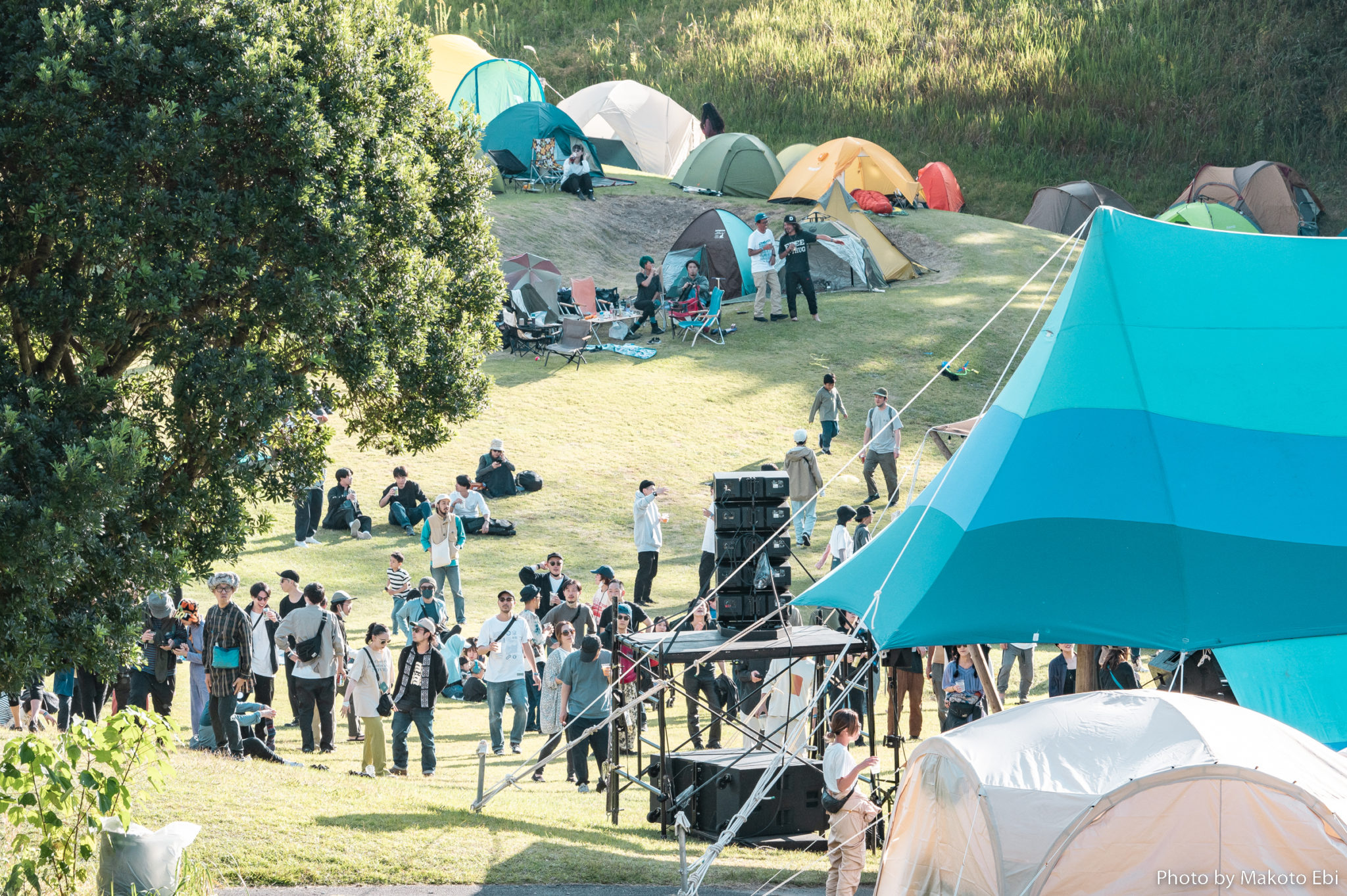
In conceptual terms, Festival de Frue, the organizers of which eschew all conventional marketing techniques, simply aims to provide “a soul-stirring musical experience.” While festival culture has become increasingly sophisticated and diversified over the years, Festival de Frue has dared to keep things simple with its music-first approach. As a result, the event has attracted a loyal and trusting fanbase. I suspect that the organizers and fans of Festival de Frue share a sense of dissatisfaction and distrust in the process through which festivals, while becoming increasingly sophisticated, tend to erase the opportunity for the essence of musical experience—truly great performances that are beyond comprehension—and the spectacle created by such performances.
Festival de Frue has always taken such an approach, and this year the entire two-day event felt like a single live performance. Accordingly, the concentration of the performers and audience was maintained throughout, and there was a sense that the intense moments in which music dominates time gradually increased.
The lineup comprised a cross-section of folk, ambient, rock, hip hop, contemporary Okinawan music, improvisation, leftfield electronic music, and more—a mixture you only get at Festival de Frue. All the live performances and DJ sets were truly amazing, but the headliners, Pino Palladino and Blake Mills featuring Sam Gendel & Abe Rounds, who indeed occupied the peak slot, were the best of the best.
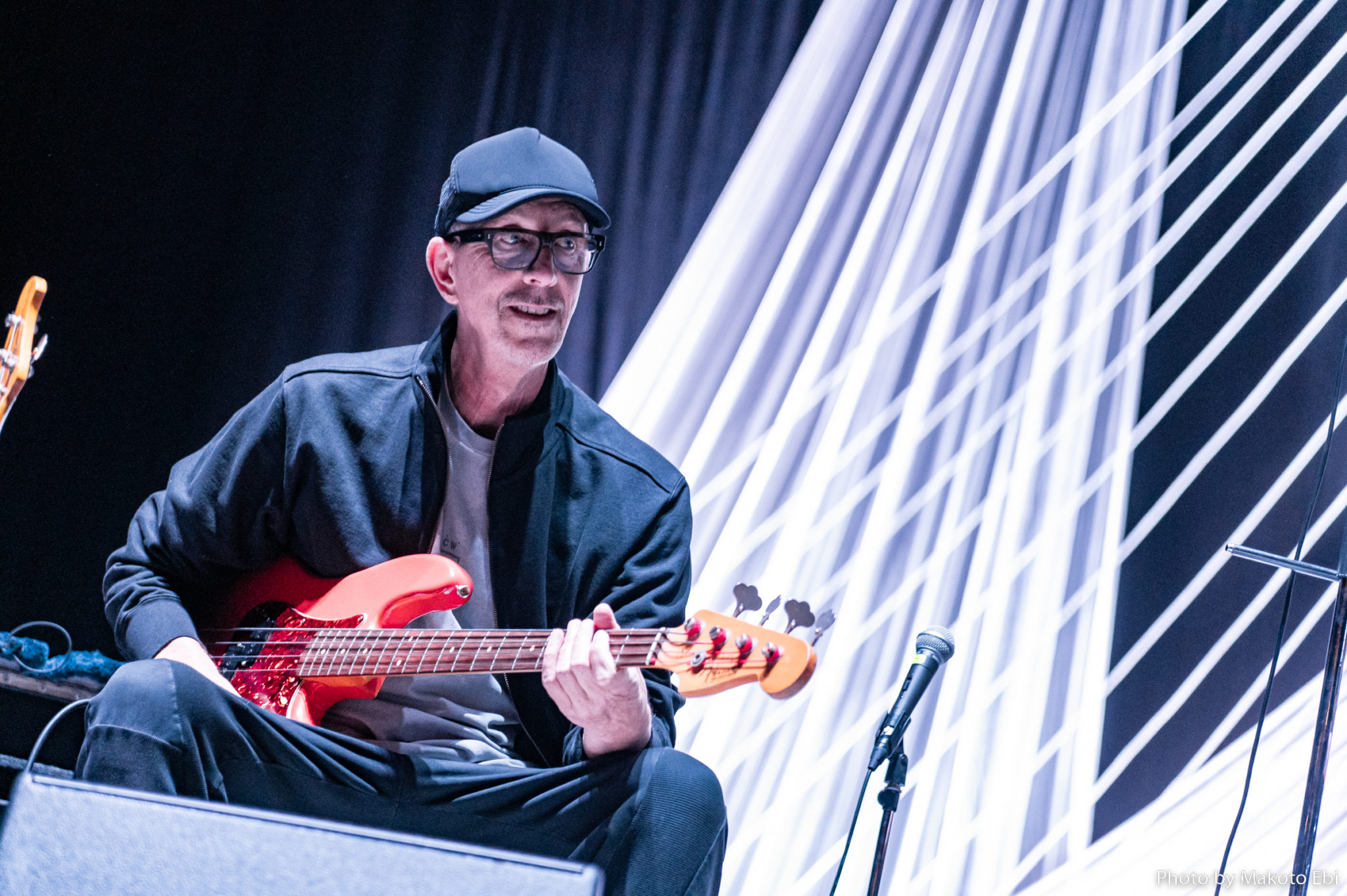
Pino Palladino
Festival organizer Shogo Yamaguchi later wrote the following post looking back on the event, which I thought said it all. I had to laugh at his detached wording, as if he were talking about something he had no hand in, but I guess that just goes to show the extent to which the headliners’ performance was in sync with the character of Festival
de Frue.
As Pino and Blake were playing, I turned around from the floor and saw how there were so many people not only on the floor but in the seats too, listening intently to the, well, pretty plain music. Wow, that’s awesome…I was a little impressed.
The ensemble, appearing devoted to the wonder of instrumentation, doesn’t play jazz, jam, or funk, but at the same time seems to draw on all of the above. Their “plain music,” de- and reconstructed by mobilizing all the performers’ finely honed techniques and sensibilities, liberated the hearts and minds of us listeners.
Pino Palladino and Blake Mills have released records such as the 2021 album “Notes with Attachments” and a live recording of the aforementioned, “Live at Sound City,” performed at Sound City Studios together with Sam Gendel. Although the compositions are different, both feature a miniature-world, relaxed sound.
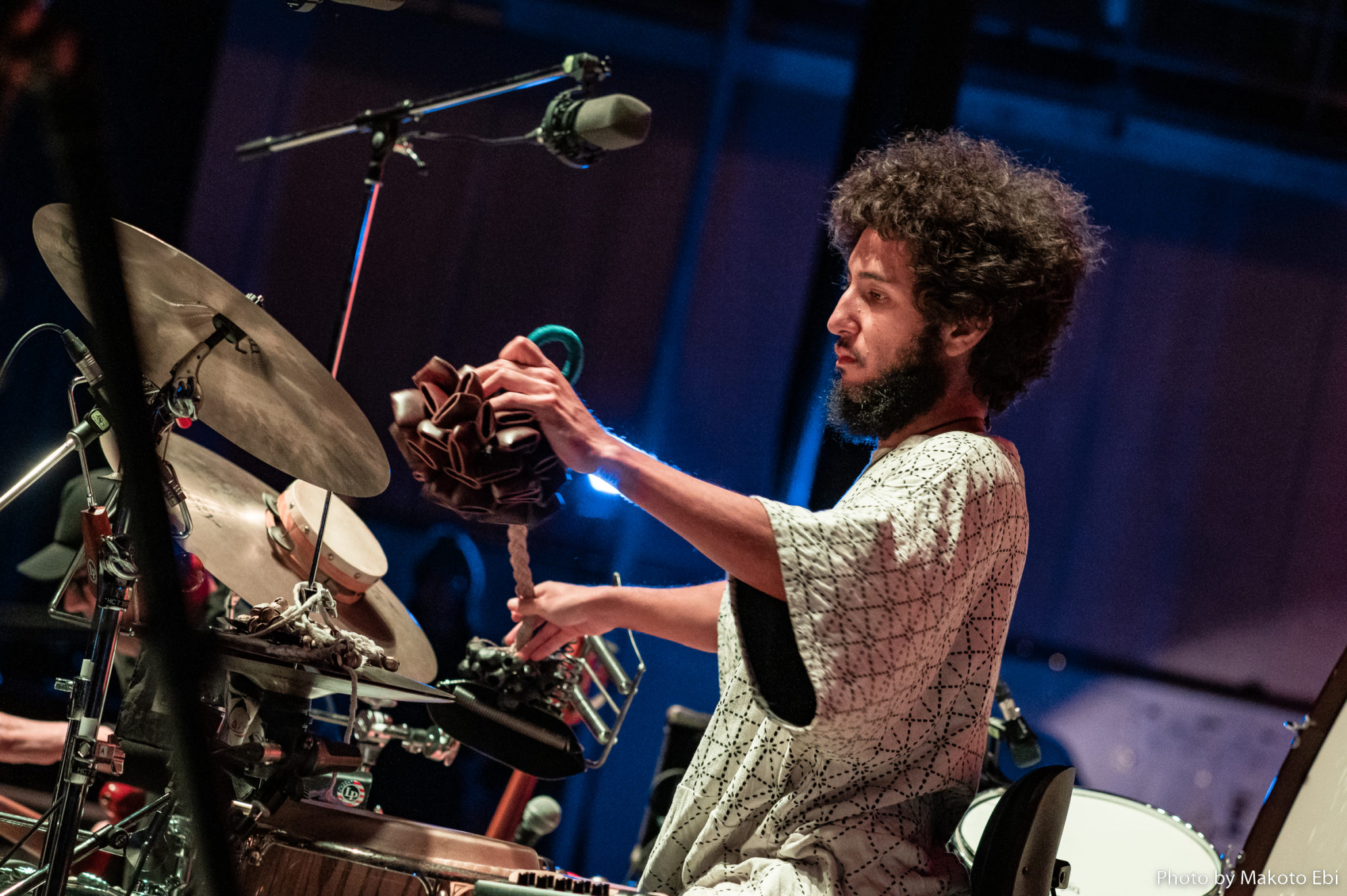
Abe Rounds
In contrast, their show at Festival de Frue, with Abe Rounds on the drums, was thrilling from the first note, delicately layered in the midst of an intense swell. The peculiarity of their performance lies in how the roles and functionality of each constituent part are quite vague, and the way they are formed is fundamentally different from that of a regular ensemble band. You can tell that they’re very open and communicating actively, giving off a beautiful and comfortable impression, yet what’s actually going on between the members is hardly understandable. It’s not unlike a certain sport-esque interaction, present in jazz-grounded improvisation.
So what exactly are they doing? One hint can be found in an interview given by Mills upon the release of “Live at Sound City,” in which he describes the project’s compositions and arrangements as follows.
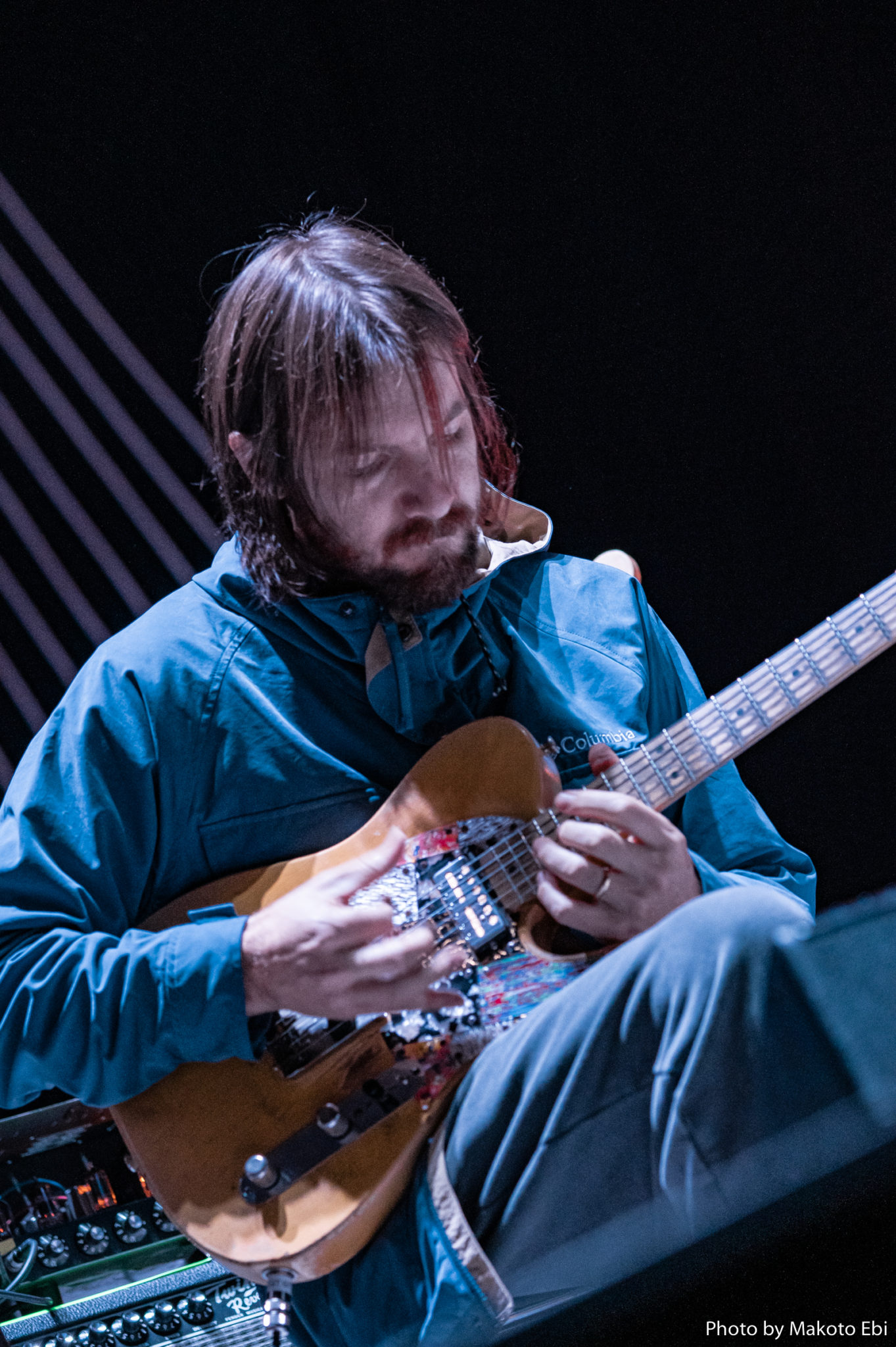
Blake Mills
“There was a sense of the composition within all the layers. At the end of the day, you’re left with this thing that’s pretty meticulously crafted and orchestrated…it’s not just the one melody anymore. In some cases, it was about trying to figure out if we needed to represent the totality of the song, or if there’s something cool about going back down to just the element we wrote this from and then finding a new instrumentation around that with just the trio.”
Sam Gendel, whom Palladino and Mills rate as essential in making their songs viable live, describes the ensemble as “like a living thing.”
“I feel like we’re still working on [the compositions] even now. It keeps evolving because there are so many handoffs between everyone. Usually everyone is doing two things at once, but the two things can be referenced back to the original music from a totally different place. I’ll hear some drum part and then I’ll want to dip into that on the sax. Pino might be thinking melody. The fun part is bringing all these uncommon flavors together.”
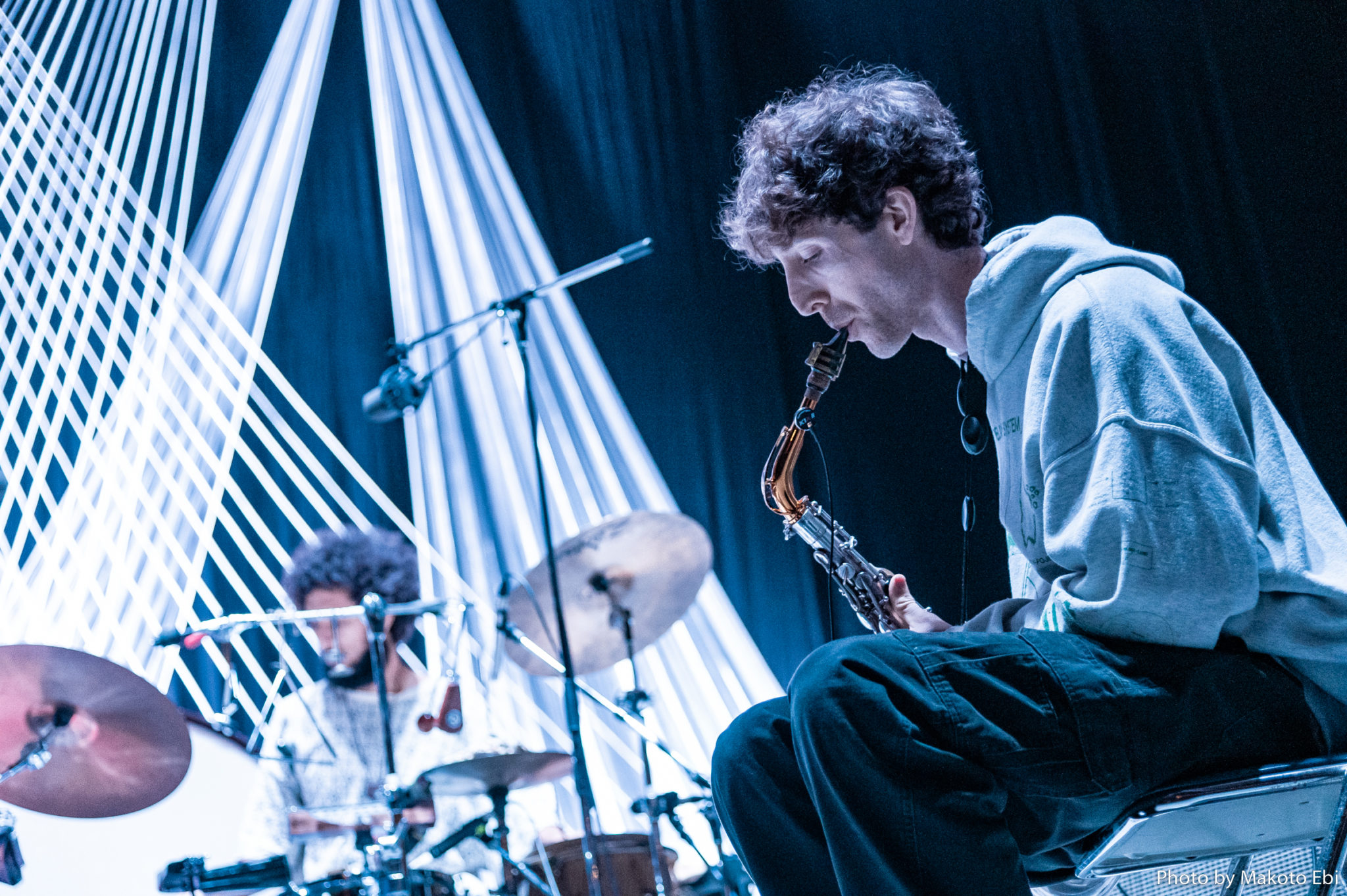
Sam Gendel
Gendel’s comparison of complex and immensely voluminous information exchange and the cycles of inspiration that result from it to a “living thing” brings to mind the concept of “life-likeness” conceived by Takashi Ikegami, a scholar of complexity and artificial life. According to Ikegami, the definition of something being “alive” is “capability for natural communication, and the ability not to make you want to know what’s inside
or how it works.” In other words, one condition for being alive is having the capability for autonomous movement that does not give away the presence of a mechanism.
Underlying the novelty in Palladino and Mills’ music is the existence of melody and rhythm as a mere skeleton for complex arrangements (orchestration), in the sense of an operating system that on this foundation builds autonomous and interchangeable performances. Here you have a natural coexistence of instrumental music simply shining as music, and any sense of mechanism—why it feels beautiful or pleasant to the listener—remaining out of grasp.
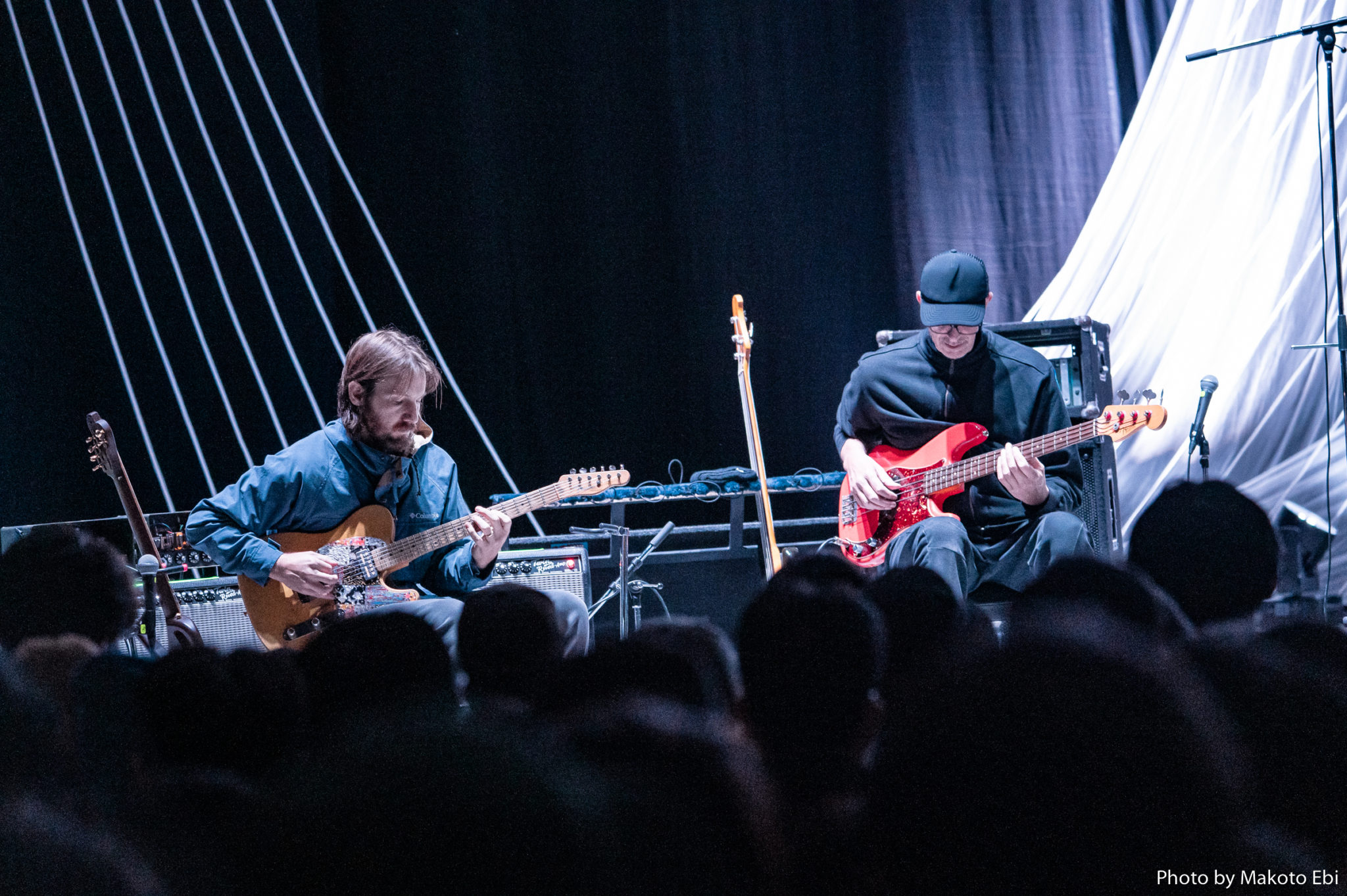
At Festival de Frue 2022, many people were moved by music that was supposed to be both plain and hard to understand, and shared a certain feeling of salvation. That last sight on the first day certainly planted a new outlook in our minds. What’s most wonderful is the conviction that this was not an accidental occurrence, but the very moment when Frue’s persistent efforts came to fruition.


